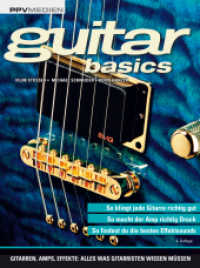- ホーム
- > 洋書
- > ドイツ書
- > Humanities, Arts & Music
- > Music
Full Description
This edited volume offers a new perspective on the new objectivity movement in music during the interwar period, challenging the view of it as a solely German or Berlin-based movement.







